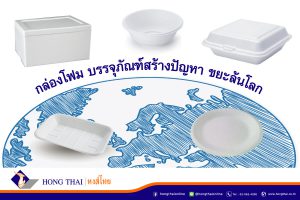“Packaging” is more than just a method of preserving quality or protecting products from damage. It also plays a significant role in marketing by enhancing product appeal through distinctive and attractive designs. The strategic selection of packaging materials, such as paperboard boxes, food containers, corrugated boxes, glass bottles, or other types of packaging, can significantly impact a business’s short-term and long-term success.
Paper Packaging
Paper packaging comes in various types, such as paper boxes, coffee cups, food containers, paper barrels, and more. These are manufactured from different grades of paper pulp, depending on their intended use. For instance, paperboard boxes requiring tear resistance are made from high-quality paper pulp and undergo a more complex production process than standard paper packaging.
There are multiple types of paper used in packaging, each with varying quality levels. Generally, paper is made from wood pulp, consisting of fibers known as cellulose. There are two main types of pulp: long-fiber pulp, which is strong and durable, made from softwood trees such as spruce and pine (typically imported from colder regions), and short-fiber pulp, which is smoother but less durable, made from hardwood trees like eucalyptus and acacia, commonly found in tropical regions.
Advantages and Disadvantages of Paper Packaging
Paper is widely used in food and beverage packaging as well as other types of containers. Its advantages and disadvantages as a packaging material include:
- Advantages: Paper has versatile properties and is environmentally friendly, as it naturally decomposes.
- Disadvantages: Paper packaging offers limited moisture resistance compared to other materials and has lower strength.
Key Characteristics of Paper for Packaging
When selecting paper for food and beverage packaging, paperboard boxes, corrugated boxes, paper pallets, and other packaging forms, several factors should be considered:
- 1. The paper must meet weight standards.
- 2. Consider the smoothness and porosity of the paper.
- 3. It should have resistance to oils and fats.
- 4. The paper should have good tensile strength and elasticity.
- 5. It must be rigid and resistant to bending.
- 6. The paper should be durable against impact and pressure.
- 7. Thickness consistency is essential.
- 8. Brightness and whiteness should be appropriate.
- 9. It should have proper water absorption properties.
- 10. The paper should be tear- and puncture-resistant.
- 11. It must withstand vertical and horizontal compression.
Conclusion: Paper is a widely used material in food, beverage, and other types of packaging. In addition to being safe for consumers due to its natural origins, paper packaging also enhances product value and aligns with environmental sustainability trends.






